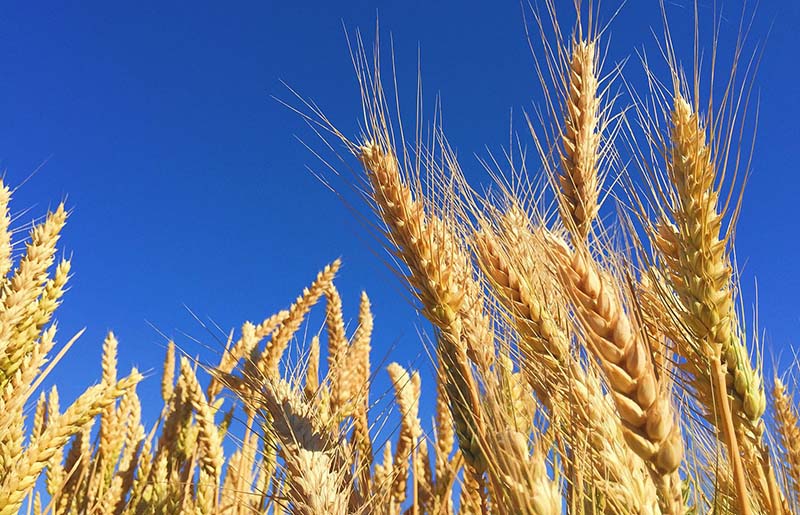Breeding for a Changing Climate

“We have to somehow predict the future when we make our selections in our breeding programs. Adding in tools like Arable will give us the chance to do that.”
Dr. Katherine Frels, University of Nebraska-Lincoln
Objective
Leverage in-field weather data, such as temperature, rainfall, solar radiation, and humidity, to produce location-specific varieties that meet growers’ needs, meet the challenges of future environments, and perform well every year.
Challenges

University of Nebraska’s Institute of Agriculture and Natural Resources is one of the world’s premier research facilities, established by congress 150 years ago as part of the US land-grant university system. A hallmark of land-grant universities is the cooperative extension program, which “emphasizes taking knowledge gained through research and education and bringing it directly to the people to create positive changes.”
Nebraska Extension provides robust services for a state in the heart of America’s breadbasket, such as UNL CropWatch, which prides itself on rigorous and unbiased research and recommendations on crop production and pest management. UNL CropWatch is part of the university’s variety testing program, established in 1943, which develops new seeds each year for growers across the state to plant in their fields. According to UNL CropWatch, winter wheat is a keystone in Nebraska’s agricultural economy, representing the state’s third largest crop grown after corn and soybean. Until March, 2021, the program has been run by Dr. Stephen Baenziger, when he passed the baton to the project’s current lead, small grains breeder Dr. Katherine Frels.
The Deployment
Wheat is a largely a dryland (non-irrigated) crop in Nebraska, which makes weather conditions especially decisive in crop outcomes. Although Nebraska has a reputation for being a wide and flat state, the climate of the Great Plains is anything but simple. In the east, the weather tends to be relatively wet, with about 27” (690mm) historical annual rainfall at about 1000 feet (300m) above sea level. In the panhandle region, over 400 miles west, lies the high altitude desert, receiving only around 12” (300mm) of rain a year and rising to about 4300 feet (1300m) above sea level. Think: the difference between Iowa’s and Wyoming’s climates. The center of the state is a transitional zone that sees just about everything in between.
Even though about three quarters of wheat is grown in the western part of the state, Nebraska Extension must do field research in each of the climate zones in order to understand how crops grown will fare for growers in each location. With a focus on ground-truth weather, they deployed one Mark 2 device at each of 3 research sites, Eastern, Panhandle, and West Central, in 2019, 2020, and 2021. The nursery near Lincoln covers about 20 acres (8 hectares), and the other plots are around 2 acres (just under a hectare) each.
“Better data at trial sites gives us the context we need to interpret how the varieties performed.”
Dr. Stephen Baenziger, UNL Wheat Researcher
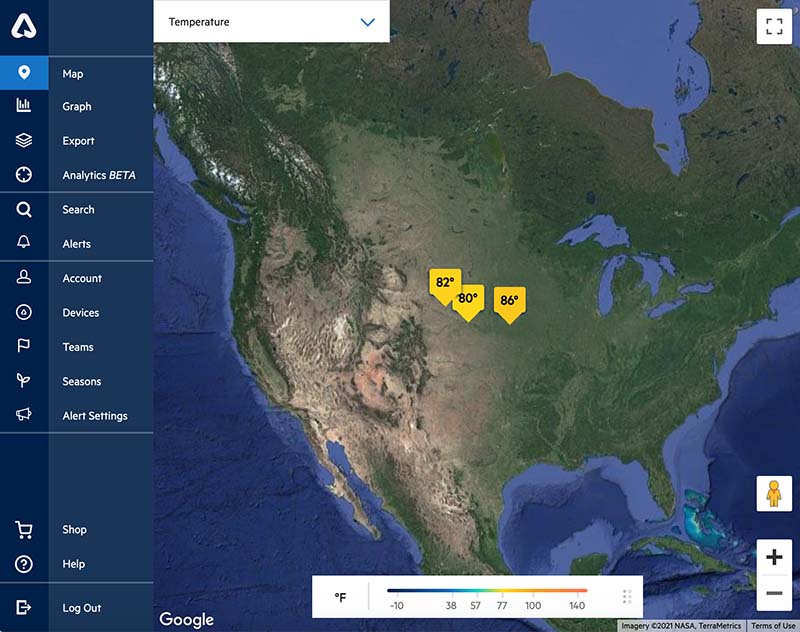
The Challenge
The reality is that researchers developing seeds for the region need to breed for increasing weather volatility; having weather stations at testing sites is now a vital component of clean data. Winter wheat in particular is a rainfed crop with a long season. Depending on climate, it is generally planted August-October and harvested the next June-July, followed by a fallow year or no-till rotational crop to recharge the water in the soil for the next season. The crop spends much of its life in a fragile state of dormancy whose bookends are triggered by uncontrollable infield weather conditions. As a result, wheat growers have a lot riding on their crop outcomes, and can’t afford to make uninformed choices about what varieties to grow when their livelihoods are at stake.
The experts at UNL run breeding programs that test multiple varieties in a location. They develop a whole suite of wheat lines each year, but only release one, taking up to 12 years of testing before a seed is considered suitable for release. For Frels, the central question is, “How can we make a better decision on that one so that it works better for farmers?” Criteria for release include demonstrated suitability for certain growing conditions, yield, and resilience characteristics, all of which hinge on the weather. Part of the reason trials take so long is that researchers want to observe varieties’ performance across a suitable sample size of weather conditions, and that just takes time for the clouds to roll in and out.
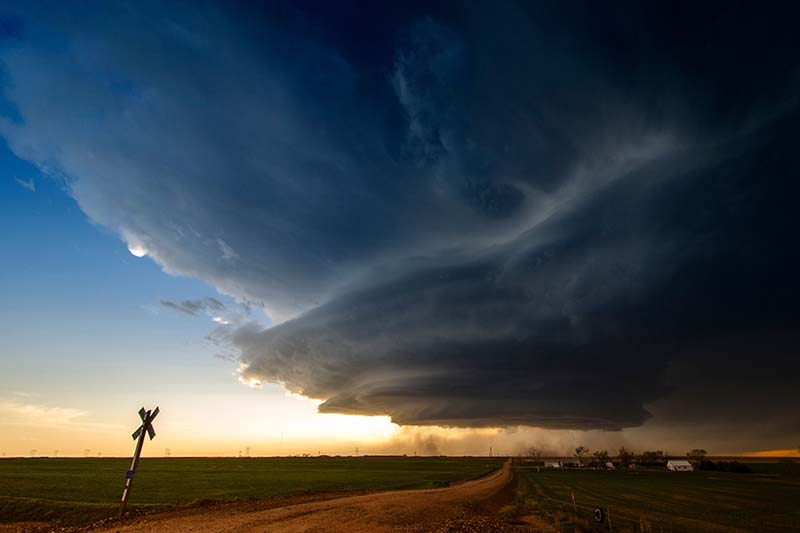
In addition to the generalized climate variability across Nebraska’s geography, highly localized pop-up storms can arise out of nowhere, shifting weather patterns from unpredictable to volatile in a matter of minutes. The UNL researchers have a deep historical understanding of weather patterns and the environment they test in, but it is already erratic, and as it becomes more intense, making reliance on historical patterns—even 150 years of them—difficult for prediction.
For example, in the panhandle, the trial site is located near the town of Hemingford, 20 miles north of the town of Alliance, where the nearest Nebraska Mesonet weather station is located—on turf next to the airport. Obviously weather at an airport is not going to replicate the conditions of a wheat field 20 miles away, even in a climate without pop-up showers, where there could be clear skies a mile away from a destructive storm. “That’s just the way our weather is,” notes Baenziger.
There are other, practical matters to consider as well. UNL research sites are well staffed, with better data in the east, near Lincoln, hundreds of miles from the center of wheat production—so having reliable data they can access remotely from the western trials is key.
“We need to have better ways to interpret whatever data we can get out of our trials,” explains Frels. “We have to somehow predict the future when we make our selections in our breeding programs. Adding in tools like Arable will give us the chance to do that.”
The Goal
Success for the UNL wheat research team is developing a variety that meets growers’ needs, meets the challenges of future environments, and does well every year.
According to the UNL wheat program, “Understanding plant development can be helpful for making management decisions. The optimum timing of fertilizer, irrigation, herbicide, insecticide, and fungicide applications are best determined by crop growth stage rather than calendar date. The impact of various crop stresses such as frost, heat, drought, disease, insect damage, or weed competition can be more accurately predicted with a clear understanding of the relationships between crop growth stage and plant response to stress.” If they can pinpoint events, like a single rain that fixed ongoing heat stress, they can understand localized variables that lead to outcomes. Says Frels, “Adding in these extra tools help us do our jobs better.”
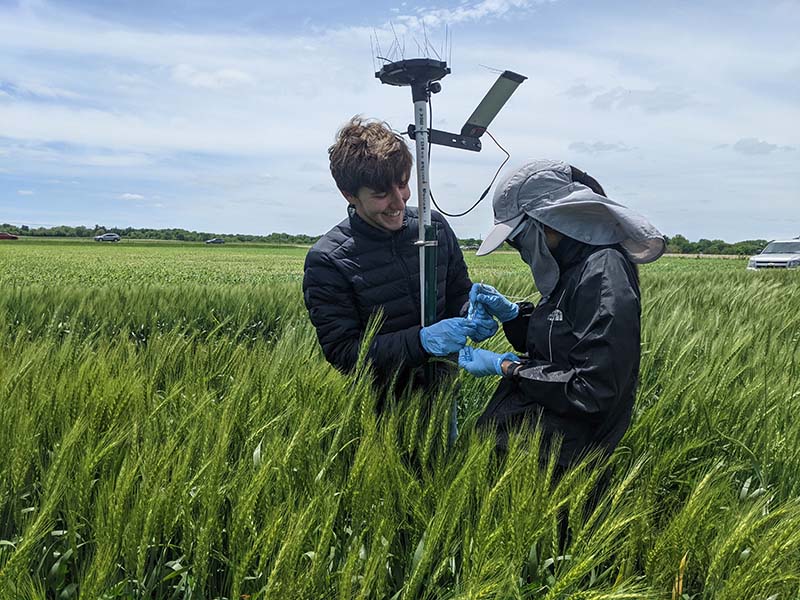
By his own recollection, during a career at UNL spanning nearly four decades, small grains researcher Baenziger has released around 42 wheat varieties. He speaks of them like they are his children; Pronghorn was his 4th. He developed it for western growers, and it continues to sell out in that region. They love it because it germinates quickly; even though it showed problems with sprouting if there is a lot of moisture at harvest, that was what actually made it well suited for drier places like the panhandle.
The team wants to replicate wins like this, using highly specialized performance conditions to their advantage. UNL’s mission to keep their reputation as unbiased experts in their region relies on having the best data available. Explains Frels, “There are many breeding programs—other universities, other public breeding programs, commercial breeders—trying to breed wheat for this region, and we want to make sure that ours is the best fit.”
“My dream scenario is figuring out how to integrate weather data to make decisions on which variety is good for which region, so that the trials we plant out in the west can work harder for us,” says Baenziger. “Better data at trial sites gives us the context we need to interpret how the varieties performed.”
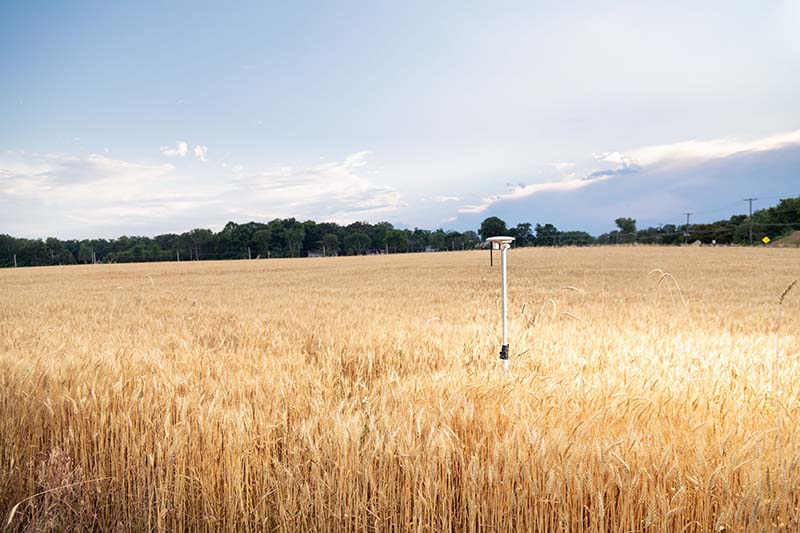
The Strategy
A colleague of Dr. Baenziger’s, Dr. Trenton Franz, first turned him onto Arable’s technology through his work in geospatial research relative to understanding field variability in seed trials. Creating feedback loops through the ability to easily share data across teams (and generations within the same team) is an important component of continuous data quality. Arable made that easy.
In addition to simple team management, from layered permissions to actionable weather, device, and crop growth stage alerts, Arable’s Graph function allows real-time and historical comparison of multiple measurements to make new connections between weather conditions and crop response. Arable data is anchored to a location, Dr. Frels can sift through past seasons at a site to gain insight into how conditions affected outcomes in past trials even before she joined the team. She can dig into key measurements like solar radiation and crop evapotranspiration (ETc) to understand characteristics like drought tolerance and water use efficiency.
Convenience and replicability are important for a research methodology that involves rotating cohorts of graduate students with varying degrees of experience setting up agtech hardware. During the four seasons Baenziger has used Arable, he has not had a problem. “Basically, we take them down at the end of the season, put them in a shed, take them out the next season, put them up, let the battery charge, punch go, and it’s on.”
Arable’s contribution to the UNL wheat team’s work is centered around accurate, reliable infield weather data—especially temperature, rainfall, solar radiation, and humidity—to help them make better recommendations based on past results, even the painful ones.
One promising variety, Rawhide, was shown to be very responsive to the kind of stressful growing conditions found in the west, with a 12 bushel higher yield than any other in the trial. For twelve years in trials, it came out looking beautiful each time. But the first year after it was released and planted in actual growers’ fields, there was a record high in the 70s F (low 20s C) for January, and the non-photoperiod-sensitive line broke dormancy. Over the course of three days, temperatures steadily dropped to around -10F (-23C), and about 70% of the line winterkilled. “We can’t predict the weather, but if we can tell our growers, here’s what you have to watch out for, here are the risks that you may be taking, you make the decision,” says Baenziger. Frels chimes in, “Having better data at the trials might have helped us avoid that.” It’s possible that at one location they may have observed that breaking-dormancy behavior, but not known exactly why, and chalked it up to a bad year, a bad trial. “But when we have better data about what happened to that trial, it gives us context to interpret the results from that trial.”
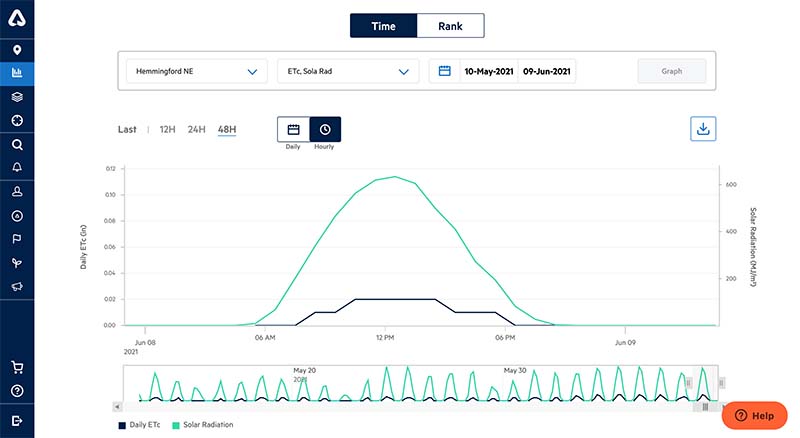
The Results
The pressing need for location-based weather initially took the researchers by surprise, since they had gotten by without it for decades. But after the Rawhide incident incurred real loss, and with each passing year showing more and more concentrated extreme weather events—heat, cold, storm, drought, or some unusual combination of all of them—it soon became obvious as the limiting factor in getting high quality data to produce location-specific varieties.
Even with soil variability atop the Ogallala aquifer (usually the soil doesn’t vary that greatly), they know that weather variability is what influences outcomes most. According to Baenziger, “Maybe someone got a timely rain, someone else didn’t. Or, it got really hot and this variety was at an earlier stage than the other, so it missed the heat stress, whereas the other one got the heat. That’s the type of thing we’re seeing.”
In one particular trial on herbicide resistance during the 2020-2021 season, they sprayed right before a cold snap, and the herbicide showed terrible results. Armed with infield weather data, the researchers knew the product had reacted badly to the cold, and can take that into consideration when evaluating future results. “Although it may still turn out to be a bum product with more testing,” Baenziger laughed, “without knowing the precise weather conditions, I might have thought it was a worthless trait, and abandoned it right then. I couldn’t put my reputation behind it and give it to a grower.”
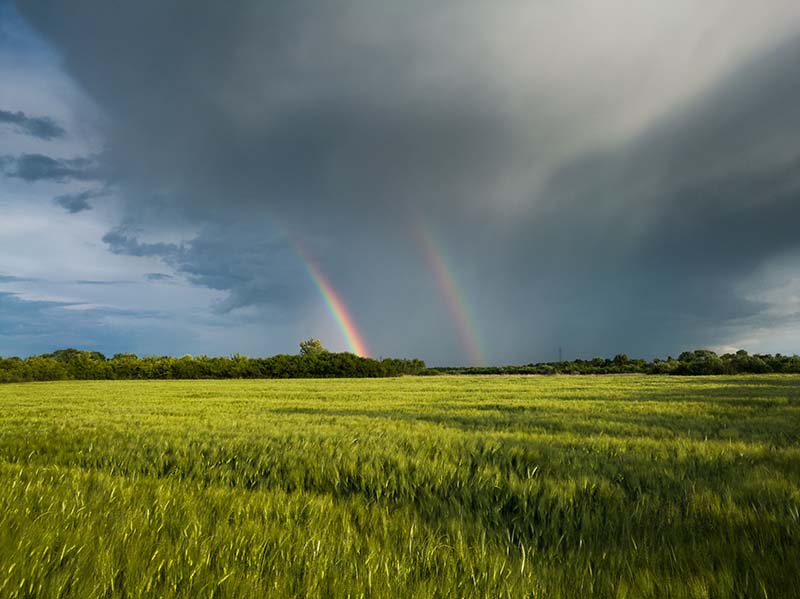
The Outcome
Ultimately, for UNL researchers with a decades-long reputation as trustworthy, unbiased straight shooters, having the right tools to make good recommendations that withstand scrutiny and years of use is important. “We’re their team,” says Baenziger, of the growers who use their seed. “Arable is a tool like any other in a toolkit we use to do our jobs well—combine, planter, weather station. It is like an adjective that can enrich the understanding of the environment we are all working in.” While a public research institution by design not completely oriented around the bottom line, using taxpayer dollars to fund their work means these tools must withstand budget scrutiny and serve many functions. “Arable is inexpensive, durable, and the price is right for us,” concludes Baenziger.
As Frels takes the reins from Baenziger’s tenure as project lead, she must think today about what wheat growers will be planting more than a decade from now. At this critical stage in climate projections, that future is even more unknowable than today’s conditions were a decade ago. She is working with Arable’s customer success team to incorporate more of the crop growth and analytics features into their analysis, to see what other levers they have to measure which wheat characteristics respond to which weather conditions, and how those interactions lead to outcomes. Achieving a variety that growers are happy with, fares well in Nebraska’s future climates, and proves itself year after year without getting flattened by an extreme weather event is more than a goal, it’s an imperative. “Every year we have to avoid picking a wheat that is going to have a ton of yield loss due to drought in its first year out to farmers, because they’re never going to plant that variety again,” notes Frels. It’s about building and maintaining trust. Baenziger agrees. “Nobody can predict the future, but we can lay out our findings, tell the growers what we’ve seen and say, ‘You evaluate the risk.’”
